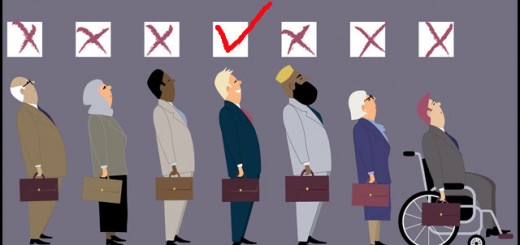The Dialogue Between Courts and Legislatures: A New Era?
In 1997 and again in 2007, Peter Hogg and Allison Bushell wrote about the benefits of the dialogue between Canadian courts and legislatures. This concept has been somewhat of a hallmark of Canadian jurisprudence, especially in the era of the Canadian Charter of Rights and Freedoms.
However, recent statements made by the Canadian Bar Association (“CBA”) and Chief Justice Beverley McLachlin after a controversial speech by Canada’s Minister of Citizenship and Immigration, Jason Kenney, reveal the emergence of a divide between the judiciary and the Harper Government. How may this divide affect the content of this dialogue between our courts and legislatures?
The Dialogue
Hogg and Bushell’s dialogue is characterized as the debate between Charter rulings by courts and democratic governance decisions by legislatures. This dialogue promotes the view that courts should legitimately undertake judicial review on Charter grounds, even rendering certain laws unconstitutional. However, by leaving room for a legislative response, these court decisions allow legislatures to respond by adapting the affected law. The first case to explicitly refer to this dialogue was Vriend v. Alberta, [1998] 1 S.C.R. 493, where the Supreme Court “read in” sexual orientation to Alberta’s former Individual’s Rights Protection Act.
The Speech
Last February at the University of Western Ontario, Minister Kenney delivered a speech entitled “Dialogue with the Courts: Judicial Actions and Integrity of Canada’s Immigration and Refugee System”. Minister Kenney said his comments on the judiciary were in “the spirit of constructive dialogue between the legislative branch and the judiciary”. However, Minister Kenney then went on to very publicly criticize the judiciary, in particular, its handling of cases from his department.
Minister Kenney pointed out instances where, in his opinion, Canadian courts were responsible for delays and failures in Canada’s immigration and refugee system. Using loaded phrases such as the “federal court’s indulgence of various appeals and reviews”, Minister Kenney challenged the judiciary to be more accommodating of the government and department’s decisions. The speech was seen as a public rebuke of the Canadian judiciary.
Canadian Bar Association Responds
In response to Minister Kenney’s remarks to the University of Western Ontario, the CBA President, Rod Snow, wrote a strongly worded public letter. In this letter, Snow commented that Kenney’s, “ public criticism of judges who follow the law but not the government’s political agenda is an affront to our democracy and freedoms.”
This statement was seen as a public and direct challenge to Minister Kenney’s speech. At several instances within the letter, Snow questioned Minister Kenney’s desire for a “constructive dialogue”, and emphasized the importance of judicial independence and the public reputation of the judiciary.
According to The Winnipeg Free Press, in a remarkable affront to the CBA, Minister Kenney’s Director of Communications, Alykhan Velshi, responded by accusing the CBA letter as being a statement made by Liberals, even going so far as to claim some federal judges “indulge foreign criminals who abuse Canada’s immigration system”.
Chief Justice McLachlin Enters the ‘Dialogue’
In a rare statement, Chief Justice McLachlin recently applauded the CBA’s criticism of Minister Kenney’s speech. A portion of her speech was published by the National Post:
“We live in a society with a strong commitment to the rule of law, and one of the elements of our commitment to the rule of law is a deep, cultural belief in and confidence in the judiciary. This goes beyond a general idea that we have good judges of integrity, it’s the confidence that brings litigants to choose the courts as a forum for resolving their disputes … and it is what allows them to accept the resulting judgments. Citizens have to have the confidence that whatever their problem, whoever’s on the other side … they will have a judge who will give them impartial justice and not be subject to pressures to direct their judgments in a particular way.”
The Outcome
It is undeniable there is currently a public skirmish between the legislature and the judiciary (and the CBA). However, is this debate/conflict part of the healthy dialogue which Hogg and Bushell wrote about? Is this “dialogue” constructive for rectifying the problematic refugee and immigration system? Or has the dialogue become too publicly toxic and antagonistic to benefit Canadian society?
Whether Minister Kenney intended his comments to provoke such a strong reaction from the CBA and the judiciary, it has and the damage has been done. A private Canadian citizen criticizing the judiciary for its decisions is one thing, but, public criticism of Canada’s judiciary from a current Minister is quite different. Even former Conservative Immigration Minister Ron Atkey likened the speech to a rant rather than a means of constructive dialogue.
In reality, Justices are charged with the complex and difficult task of upholding the rule of law in our society. Without public faith in the judiciary the justice system cannot be maintained, it is after all, a reactive mechanism. If faith is lost then the judiciary cannot respond as a dispute resolution mechanism given that citizens will not come to it for help.
It is for these very reasons most law societies have restrictions placed upon lawyers refraining them from doing things which would bring the legal profession or the administration of justice into disrepute (such as the Law Society of Upper Canada’s Rules of Professional Conduct Rule 3.01(2)(e) ).
While Minister Kenney’s speech allegedly had the intention of being within the “spirit” of a constructive dialogue, it appears to have had the opposite effect with the judiciary. Minister Kenney’s comments were perceived by many, such as the CBA and Chief Justice McLachlin, as comments which weaken public trust in the rule of law in Canada. Given the snowballing of public statements which have occurred between the two after the speech, has there been a shift in the traditional dialogue between the judiciary and the legislature or is it the same as ever?








Join the conversation